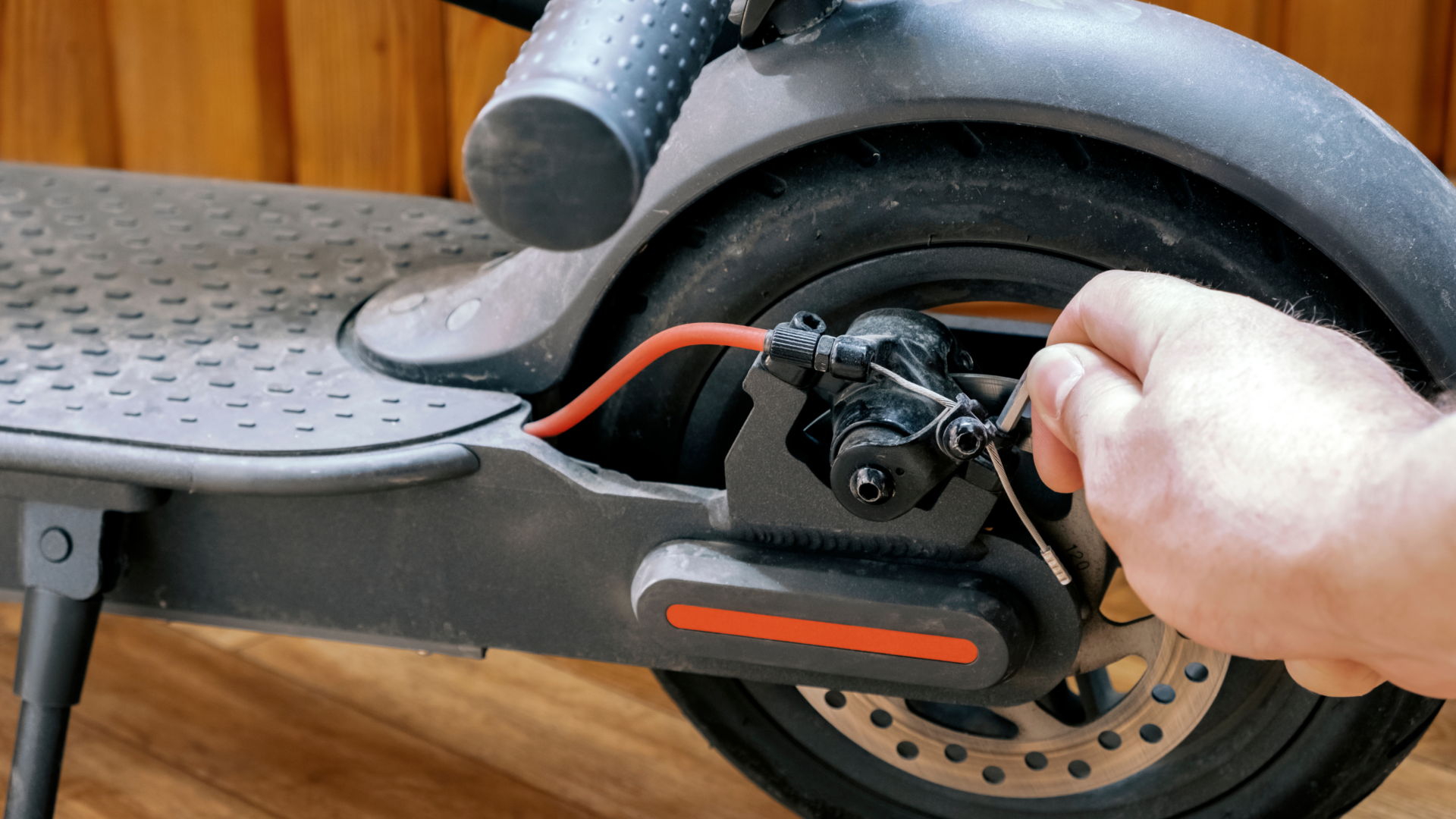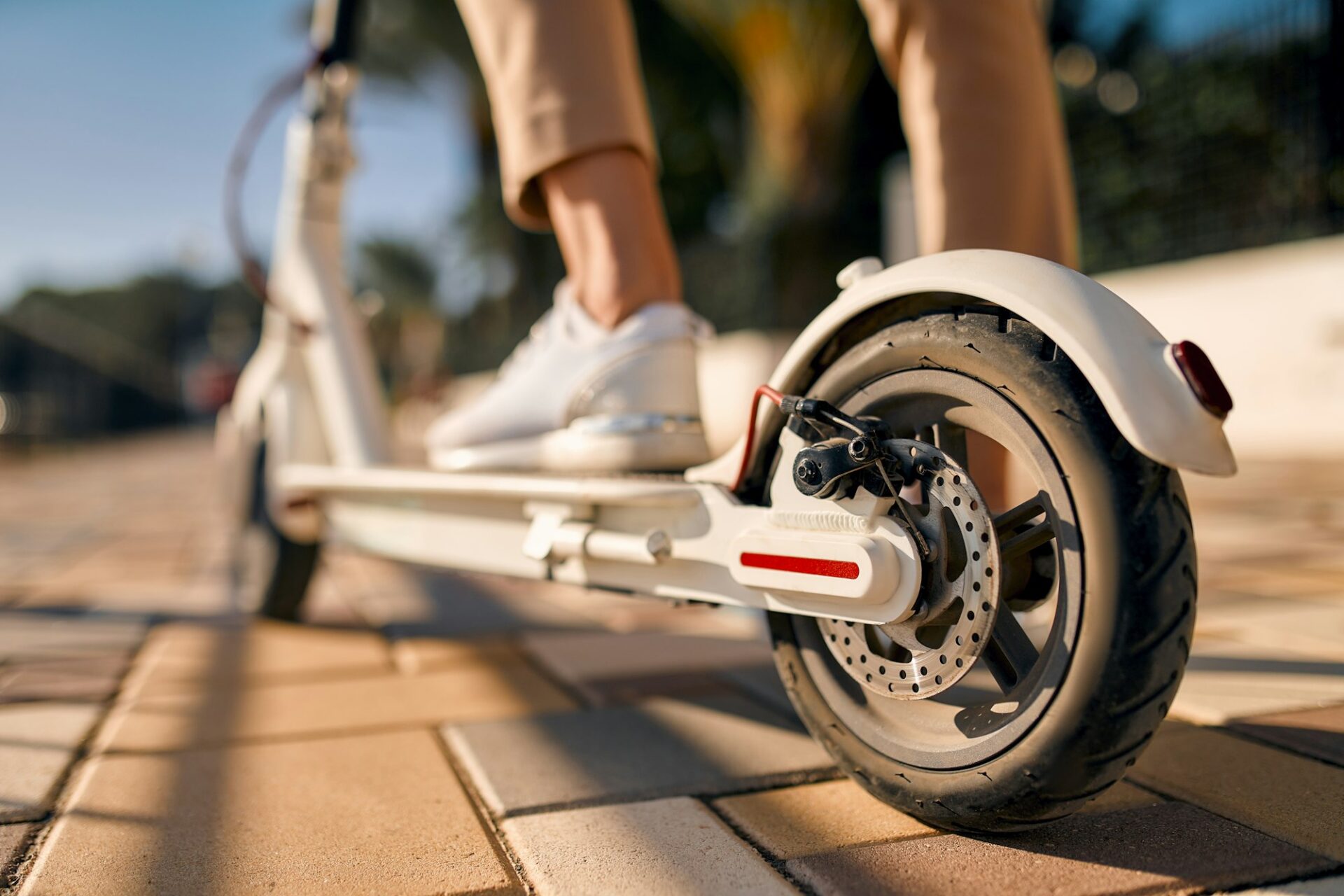Have you ever wondered how long do electric scooters last? The increasing popularity of electric scooters for commuting and leisure makes this a crucial question for many riders. Whether you’re a seasoned rider or considering your first purchase, understanding the factors that affect the longevity of electric scooters is essential. From the average lifespan to tips on extending their usability, you’ll find everything you need to know right here.
E-scooters can be an excellent investment, offering convenience and efficiency. But how long do they last? This comprehensive guide will dive into the main factors that affect an electric scooter’s lifespan, including usage patterns, maintenance practices, and build quality. We’ll also provide actionable tips to help you care for your scooter, common issues to look out for, and how to maximize the life of your ride.
So, if you’re ready to learn how to make the most out of your electric scooter, keep reading!
Stay tuned as we explore:
- The average lifespan of electric scooters
- Factors affecting their longevity
- Essential maintenance tips for electric scooters
- How to extend the lifespan of your electric scooter
- Common problems and how to address them

Understanding the Average Lifespan of Electric Scooters
These two-wheeled vehicles have quickly become a popular mode of transport due to their convenience and eco-friendliness. But how long do electric scooters last? Generally, the average lifespan of electric scooters ranges from 1 to 3 years. Several factors play a crucial role in determining this lifespan.
Factors Influencing Lifespan
- Usage Patterns: Frequent and heavy usage can wear out components faster. Casual use usually results in a longer lifespan compared to daily, intensive commutes.
- Build Quality: High-quality electric scooters made from durable materials are designed to last longer. Investing in a reputable brand can significantly impact longevity.
- Maintenance: Proper maintenance practices such as regular cleaning, timely replacements of worn-out parts, and proper storage can extend an electric scooter’s life span.
- Electric Scooter Battery Life: The battery life cycle is a significant factor. Most electric scooter batteries last between 300 to 500 charge cycles, equating to about 1 to 2 years of use.
Understanding Mileage Expectancy
- Electric Scooter Mileage Expectancy: On average, electric scooters can cover between 500 to 1,500 miles before major components need replacement or repair. High-end models could offer more mileage.
- Warranty Considerations: Many high-quality electric scooters come with warranties that cover particular parts like the battery and motor. Be sure to check the warranty terms to understand your coverage.
When to Replace an Electric Scooter
- Excessive Wear and Tear: When multiple components such as the motor, battery, and brakes show simultaneous signs of wear.
- Increased Maintenance: When regular maintenance is no longer sufficient to keep the scooter operating efficiently.
- Safety Concerns: When safety is compromised due to structural damages or consistent performance issues.
Knowing these factors can provide valuable insight into the expected duration of your electric scooter and help you plan accordingly. The next section will delve deeper into specific elements affecting the longevity of electric scooters.
Stay tuned as we explore the factors affecting the longevity of electric scooters in the next section.

Factors Affecting the Longevity of Electric Scooters
The lifespan of an electric scooter is influenced by multiple factors. Understanding these can help you make informed decisions and adopt practices that will extend the life of your scooter.
Usage Patterns
- Frequency of Use: Scooters used daily for long commutes experience more wear and tear than those used occasionally.
- Riding Conditions: Riding on rough terrains, uphill paths, and during inclement weather can significantly affect the durability of the scooter.
- Rider Weight: Heavy loads can stress the motor, battery, and structural components, reducing the scooter’s overall lifespan.
Maintenance Practices
Regular maintenance is key to enhancing electric scooter durability.
- Battery Management: Properly charging and storing the battery can extend its life. Avoid deep discharges and overcharging.
- Tire Maintenance: Check tire pressure regularly and ensure they are neither overinflated nor underinflated to minimize wear and potential damage.
- Component Inspections: Routine checks of the brakes, motor, and electrical systems can prevent minor issues from becoming significant problems.
Build Quality
Not all electric scooters are built the same. The materials and construction quality can vary greatly across different models.
- Material Quality: Scooters constructed with high-quality materials like aluminum alloys and robust plastics generally last longer.
- Brand Reputation: High-quality electric scooters from reputable brands often come with better build quality and warranties. These tend to have extended durability.
- Design and Engineering: Well-engineered scooters with features like shock absorption and durable frames tend to have a longer operational life.
Environmental Factors
Environmental conditions can also play a role in the lifespan of your electric scooter.
- Climate: Extreme temperatures, both hot and cold, can affect battery capacity and the integrity of other components.
- Storage Conditions: Storing the scooter in a dry, moderate-temperature environment can protect its components from moisture and temperature-related damage.
Being aware of these factors allows you to take preventive measures to maximize the life expectancy of your electric scooter. With proper care and mindful usage, you can significantly extend the durability of your electric scooter, getting the most out of your investment.
Next, we will explore essential maintenance tips that can help keep your electric scooter in top condition.

Essential Electric Scooter Maintenance Tips
Proper maintenance is vital for extending the lifespan of your electric scooter. Regular maintenance can prevent common electric scooter problems and ensure optimal performance. Here are some essential electric scooter maintenance tips:
Battery Care
- Regular Charging: Charge your battery regularly, ideally after each use, to maintain its health. Avoid letting it fully discharge.
- Avoid Overcharging: Disconnect the charger as soon as the battery is fully charged to prevent overcharging, which can decrease battery life.
- Temperature Management: Store and charge the battery in a cool, dry place to protect it from extreme temperatures.
Tire Maintenance
- Check Tire Pressure: Regularly check and maintain the recommended tire pressure for optimal performance and to extend tire life.
- Inspect Tires: Look for signs of wear and tear, such as cracks or punctures, and replace tires as needed.
- Proper Alignment: Ensure that tires are properly aligned to prevent uneven wear and improve ride quality.
Brake Maintenance
- Inspect Brakes Frequently: Regularly check the brake pads and other components for wear and replace them if necessary.
- Adjust Brake Tension: Ensure that the brakes are adequately tightened for effective stopping power.
- Clean Brake Parts: Keep the brake area clean and free from debris for optimal performance.
Overall Scooter Care
- Regular Cleaning: Clean your scooter thoroughly, especially after riding in wet or muddy conditions, to prevent rust and grime buildup.
- Lubricate Moving Parts: Apply appropriate lubricant to the moving parts, such as the bearings and hinges, to reduce friction and wear.
- Check Electrical Components: Regularly inspect the lights, display, and other electrical components to ensure they are functioning correctly.
- Tighten Bolts and Screws: Periodically check and tighten loose bolts and screws to prevent parts from coming loose during rides.
By implementing these best practices for electric scooter maintenance, you can significantly improve your scooter’s durability and performance. Regular checks and care will not only enhance the lifespan of your scooter but also ensure a safer and smoother riding experience.
In the next section, we will explore practical tips on how to extend your electric scooter’s lifespan further. Stay tuned.

How to Extend Your Electric Scooter’s Lifespan
Maximizing the lifespan of your electric scooter requires a combination of conscious usage, diligent maintenance, and attention to detail. By adopting certain habits and practices, you can significantly enhance your scooter’s durability and performance.
Adopt Proper Riding Techniques
- Gentle Acceleration and Braking: Avoid sudden starts and stops, which can strain the motor and battery. Smooth acceleration and gradual braking reduce wear and tear.
- Avoid Rough Terrains: Stick to smooth, paved surfaces whenever possible. Rough terrains can put extra stress on the suspension and tire systems.
- Respect Weight Limits: Adhere to the manufacturer’s recommended weight limit to prevent undue stress on the scooter’s components.
Regular Maintenance
- Consistent Check-Ups: Schedule regular inspections to catch potential issues early. This includes checking the battery, tires, brakes, and electrical systems.
- Use Quality Replacement Parts: Opt for high-quality electric scooter replacement parts when necessary. Genuine parts ensure better compatibility and longevity.
- Keep it Clean: Regular cleaning can prevent dirt and grime build-up that could affect the scooter’s mechanical and electrical systems.
Proper Battery Management
- Mind the Charging Practices: Avoid frequent deep discharges and ensure the battery does not stay at 100% for extended periods. Keep the charge level between 20% and 80% for optimal battery life.
- Environment Control: Store your scooter in a cool, dry place to protect the battery from extreme temperature fluctuations which can degrade its performance over time.
- Regular Charging: Charge the battery regularly, even if you do not use the scooter frequently. This helps maintain the battery’s health and longevity.
Adherence to Manufacturer Guidelines
- Follow the Manual: Always refer to the user manual for specific maintenance schedules and guidelines. Each model may have unique requirements that are crucial for its care.
- Honor Warranty Terms: Keep up with the maintenance as outlined in your warranty. Often, failing to follow these guidelines can void the warranty.
- Professional Servicing: Don’t hesitate to seek professional services for complicated repairs. Attempting DIY fixes without proper knowledge can do more harm than good.
Implementing these strategies will not only improve the overall durability and performance of your electric scooter but also ensure that it serves you well for many years.
In the next section, we’ll discuss common electric scooter problems and how to recognize them early on. Stay tuned to equip yourself with the know-how to keep your scooter running smoothly.

Recognizing Common Electric Scooter Problems
Understanding common electric scooter problems can help you address issues before they become major repairs or safety hazards. Early detection and timely intervention can significantly enhance the durability and lifespan of your scooter.
Battery Issues
- Decreased Battery Life: If your battery depletes faster than usual, it could be a sign of aging or improper charging practices. Regular monitoring of battery performance is crucial.
- Charging Problems: Difficulty in charging or fluctuating charge levels often indicate connection issues, cable damages, or battery degradation.
Motor and Electrical Problems
- Inconsistent Performance: Fluctuations in speed, power, or sudden stops can signal motor or electrical issues. Regular maintenance checks can identify and resolve minor glitches early.
- Unusual Noises: Grinding, clicking, or buzzing noises could indicate issues with the motor, bearings, or other mechanical components. Ignoring these sounds can lead to extensive damage.
Structural and Component Wear
- Tire Wear and Damage: Signs of worn-out tires include low tread, cracks, and punctures. Regularly inspect and replace tires to maintain safety and performance.
- Brake Issues: Ineffective braking or squeaky brakes can result from worn-out brake pads or misaligned components. Address these issues promptly to ensure safe operation.
- Loose Components: Check for loose bolts, screws, and other parts. Tightening these components can prevent structural damage and ensure smooth functionality.
Electrical System Failures
- Display Malfunctions: Display issues, errors, or non-responsive screens can indicate underlying electrical problems. Ensure connectors and wiring are intact and functioning.
- Lighting Problems: Faulty lights, whether headlights, taillights, or indicators, can compromise safety. Inspect and replace bulbs or address electrical connection issues to keep the lighting system operational.
Environmental and User-Induced Issues
- Water Damage: Exposure to water can cause electrical faults and rusting. Always store your scooter in a dry place and avoid riding through deep water.
- User Misuse: Overloading, aggressive riding, and neglecting maintenance schedules can expedite wear and tear. Follow manufacturer guidelines for optimal usage and care.
By monitoring for these common problems and addressing them promptly, you can avoid costly repairs and keep your electric scooter running efficiently for a longer period.
To conclude, let’s review some key strategies to maximize the durability and lifespan of your electric scooter in the final section. This will cover a summary of insights and maintenance practices to keep your scooter in top condition. Stay tuned.

Conclusion: Maximizing the Durability and Lifespan of Your Electric Scooter
In conclusion, understanding and addressing the factors that affect the longevity of electric scooters can significantly extend their operational life. By considering the average lifespan of electric scooters and integrating best practices for maintenance and care, you can ensure that your scooter remains reliable and efficient for years to come.
Key Takeaways
- Average Lifespan: Generally, electric scooters last between 1 to 3 years, depending on usage, maintenance, and build quality.
- Factors Affecting Longevity: Frequent use, harsh riding conditions, battery life, and build quality are primary factors influencing lifespan.
- Maintenance Tips: Regular cleaning, proper battery care, tire and brake inspections, and lubrication of moving parts are essential for maintaining scooter health.
- Extending Lifespan: Adopt gentle riding techniques, follow manufacturer guidelines, and ensure regular check-ups and professional servicing when necessary.
- Recognizing Problems: Early detection of issues like battery drain, motor inconsistencies, structural wear, and electrical faults can prevent major repairs and enhance durability.
Actionable Strategies
- Invest in high-quality electric scooters with a robust build and reputable warranties for better durability.
- Implement electric scooter maintenance tips such as regular charging, tire inspections, and brake adjustments to keep your scooter in optimal condition.
- Stay aware of common electric scooter problems and address them promptly to avoid extensive repairs.
- Ensure proper electric scooter battery life management by avoiding deep discharges and protecting it from extreme temperatures.
- Use genuine electric scooter replacement parts for repairs and replacement batteries to ensure compatibility and better performance.
Lastly, consistent care and mindful usage of your electric scooter will not only extend its lifespan but also provide a safe and enjoyable riding experience. By following the insights and maintenance practices discussed in this guide, you can maximize the durability of your scooter and get the most out of your investment.
Thank you for taking the time to read this comprehensive guide on the lifespan, maintenance, and durability of electric scooters. We hope you find this information valuable and practical for keeping your electric scooter in top-notch condition. Safe riding!